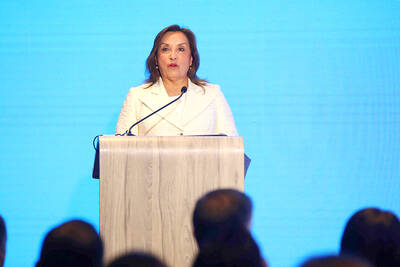Airlines around the world checked their Boeing aircraft on Saturday for potentially defective fuel pumps that could cause a fire or an explosion in the rare event that fuel tanks run dry.
A number of them ordered their pilots to fly with extra fuel to keep the pumps submerged, averting any risk of explosion.
EasyJet of Britain was the airline most affected on Saturday by a warning from US regulators that about 3,000 Boeing aircraft could be fitted with the suspect fuel pumps.
Europe's biggest no-frills airline said it had 18 Boeing 737-700 aircraft in its fleet, one of the types mentioned in the warning on fuel pumps.
Many airlines said they did not fly the models affected by the alert. Among them were Air France, Alitalia, British Airways, Lufthansa, SN Brussels, Swiss Air Lines, Cathay Pacific Airways, Thai Airways and Virgin's international service.
The pumps are used in wing fuel tanks on the Boeing 737-600, 737-700, 737-700C, 737-800, 737-900; 747; and 757 series.
The US Federal Aviation Administration warned that the pumps could cause a fire or an explosion in the rare event that fuel tanks run dry.
In Australia, Qantas Airways and the Virgin Blue domestic operator began inspecting their Boeing aircraft.
Australia's Civil Aviation Safety Authority (CASA) said both airlines were also taking precautionary action, ordering all aircraft to fly with extra fuel.
A CASA spokesman said Qantas and Virgin Blue had taken delivery of new 737s this year. Qantas flew some older 747s, but these might have had faulty pumps fitted as replacements.
The technical chief of the Finnish flag carrier Finnair said it had seven 757s but that checks on fuel tanks would not affect service because safety guidelines could be met until any repair that was needed could be done.
The only other European airline that reported flying the types of planes affected was KLM, whose spokesman Frank Houben said it had found one Boeing plane fitted with the pump.
"The plane will be used for very short-distance flights. The pump will be replaced on Tuesday," said Houben. He said there was no risk involved in using the pumps on short hops.
Joseph Wu (

CAUTIOUS RECOVERY: While the manufacturing sector returned to growth amid the US-China trade truce, firms remain wary as uncertainty clouds the outlook, the CIER said The local manufacturing sector returned to expansion last month, as the official purchasing managers’ index (PMI) rose 2.1 points to 51.0, driven by a temporary easing in US-China trade tensions, the Chung-Hua Institution for Economic Research (CIER, 中華經濟研究院) said yesterday. The PMI gauges the health of the manufacturing industry, with readings above 50 indicating expansion and those below 50 signaling contraction. “Firms are not as pessimistic as they were in April, but they remain far from optimistic,” CIER president Lien Hsien-ming (連賢明) said at a news conference. The full impact of US tariff decisions is unlikely to become clear until later this month

With an approval rating of just two percent, Peruvian President Dina Boluarte might be the world’s most unpopular leader, according to pollsters. Protests greeted her rise to power 29 months ago, and have marked her entire term — joined by assorted scandals, investigations, controversies and a surge in gang violence. The 63-year-old is the target of a dozen probes, including for her alleged failure to declare gifts of luxury jewels and watches, a scandal inevitably dubbed “Rolexgate.” She is also under the microscope for a two-week undeclared absence for nose surgery — which she insists was medical, not cosmetic — and is

GROWING CONCERN: Some senior Trump administration officials opposed the UAE expansion over fears that another TSMC project could jeopardize its US investment Taiwan Semiconductor Manufacturing Co (TSMC, 台積電) is evaluating building an advanced production facility in the United Arab Emirates (UAE) and has discussed the possibility with officials in US President Donald Trump’s administration, people familiar with the matter said, in a potentially major bet on the Middle East that would only come to fruition with Washington’s approval. The company has had multiple meetings in the past few months with US Special Envoy to the Middle East Steve Witkoff and officials from MGX, an influential investment vehicle overseen by the UAE president’s brother, the people said. The conversations are a continuation of talks that

CHIP DUTIES: TSMC said it voiced its concerns to Washington about tariffs, telling the US commerce department that it wants ‘fair treatment’ to protect its competitiveness Taiwan Semiconductor Manufacturing Co (TSMC, 台積電) yesterday reiterated robust business prospects for this year as strong artificial intelligence (AI) chip demand from Nvidia Corp and other customers would absorb the impacts of US tariffs. “The impact of tariffs would be indirect, as the custom tax is the importers’ responsibility, not the exporters,” TSMC chairman and chief executive officer C.C. Wei (魏哲家) said at the chipmaker’s annual shareholders’ meeting in Hsinchu City. TSMC’s business could be affected if people become reluctant to buy electronics due to inflated prices, Wei said. In addition, the chipmaker has voiced its concern to the US Department of Commerce